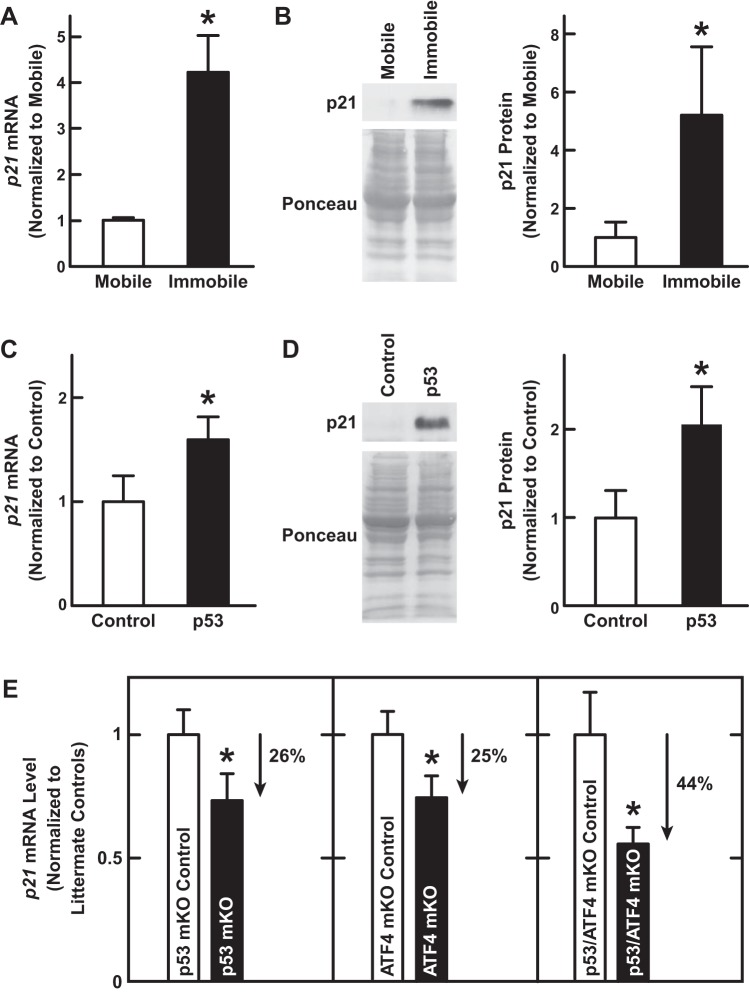Fig. 9.
Immobilization increases skeletal muscle p21 mRNA in a manner that is dependent on both p53 and ATF4. A and B: C57BL/6 were subjected to 3 days of unilateral hindlimb immobilization, and then bilateral TA muscles were harvested for further analysis. Data are means ± SE from 4 mice. P values were determined with paired t-tests. A: qPCR analysis of p21 mRNA levels. B: an equal amount of protein (100 μg) from each muscle was subjected to immunoblot analysis with anti-p21 monoclonal IgG. Membranes were stained with Ponceau S to confirm equal loading. B, left: representative immunoblots. B, right: quantification. C and D: in C57BL/6 mice, 1 TA muscle was transfected with 20 μg of p-wt-p53, and the the contralateral TA (control) was transfected with 20 μg of empty plasmid (pcDNA3). Three days later, bilateral TAs were harvested for further analysis. Data are means ± SE from 4 mice. P values were determined with paired t-tests. C: qPCR analysis of p21 mRNA levels. D: an equal amount of protein (100 μg) from each muscle was subjected to immunoblot analysis with anti-p21 monoclonal IgG. Membranes were stained with Ponceau S to confirm equal loading. D, left: representative immunoblots. D, right: quantification. E: mice with the indicated genotypes were subjected to 3 days of unilateral hindlimb immobilization, and then qPCR was used to quantitate p21 mRNA levels in bilateral TA muscles. Data are means ± SE from ≥10 mice/genotype. For each knockout line and its corresponding littermate control line, p21 mRNA levels were normalized to the level in the control line, and P values were determined with unpaired t-tests. *P ≤ 0.05.

